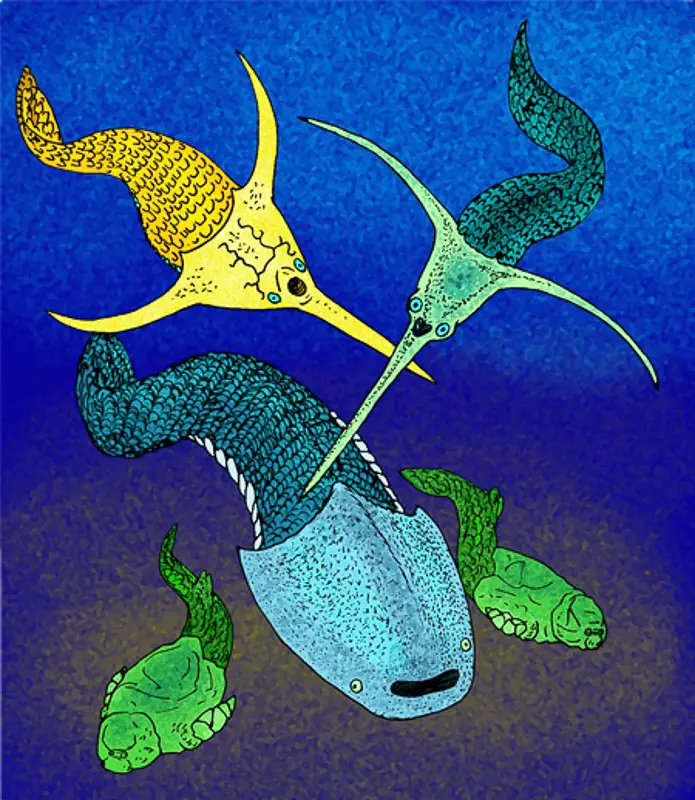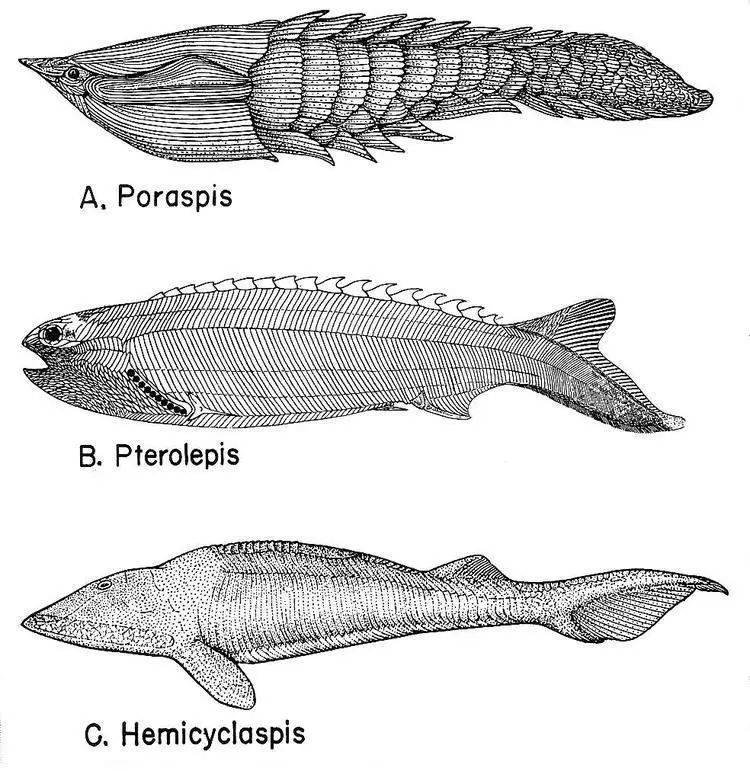Ostracoderms are the primitive members of the subphylum Vertebrata but they were not the first Vertebrate to originate on our earth. Before them, there were the ancestors of Subphylum Vertebrata but their fossil evidence is not available today, there are different opinions about the absence of fossil evidence for the ancestors of Subphylum Vertebrata.
Ostracoderms represent extinct fish like primitive Vertebrate and their mouths were not bordered by the jaw. Cyclostomata is also at the same timeframe as the Ostracoderm. Ostracoderms are now extinct but the Cyclostomata exist today in the form of Hagfish and lamprey.

Both Ostracoderms and Cyclostomata do not have a jaw-covered mouth so both are placed under a separate group Agnatha. The members of Agnatha separated from the group Gnathostomata due to the absence and presence of the jaw.
Timeframe of Ostracoderms:
Ostracoderms were probably present during the late Cambrian period because the rock of about 500 million years ago show the existence of Ostracoderm fossil. But most of the workers believe that the first Vertebrate was originated before the Cambrian period but they may be soft-bodied so we do not have any fossil evidence or maybe the early Vertebrate ancestors were freshwater habitants. However for now we have only evidence of Vertebrata during the late Cambrian period and middle Ordovician period.
Eventually, the primitive Vertebrates become more evolved and finally they become abundant in during the Devonian period. Some freshwater sediment also shows the Ostracoderm fossil evidence so it is difficult to say that the ancestors of Ostracoderm were marine or freshwater.
Important Features of Ostracodermi:

- Ostracodermi was of different sizes, from small to medium.
- In external appearance they seem to be fish but they are not actually fish because the features of fish do not present in them, they are only similar to fish in external appearance.
- Their body was flattened dorso ventrally and the streamlined body gives them fish like appearance.
- The anterior part of the body was a large sized head, the head is much larger as compared to the remaining body size.
- They live in water so they are completely dependent for their respiratory gases from the dissolved gases in the water. They respire through the gill present and they gill open outside through pharyngeal gill slits.
- Body is divided into three parts, anterior broad head, middle slender muscular trunk and the post anal tail with heterocercal caudal fin.
- The pectoral and pelvic fin present in fish but in Ostracoderms there are no pectoral fin and pelvic fin, only median fin present.
- Ostracoderms do not have jaw in their mouth, the body is highly armoured with bony structures.
- They are known as Ostracoderms, the word Ostracoderms represent the dermal scales. Their head has a bony shield like scale like structure. The remaining part of the body is covered by several plates like dermal scales, for this reason they are known as Ostracoderms.
- There are different reasons why they were highly armoured, one opinion is the armoured shield protected them against the scorpion like Arthropods.
- The scorpion like Arthropods were the strong predators of Ostracoderm so they were armoured but with time when the predators Arthropods disappeared they become armour less.
Special Features of Ostracodermi:
- The head shows some peculiar features in Ostracoderms, the two lateral eyes present alongwith the median pineal eye on the head.
- The nostril is single present median side of head near the median eye.
- Ostracodermi are placed under Subphylum Vertebrata but in Ostracodermi do not have any axial endosketon or vertebrae.
- On the head mouth present on anteroventral side, mouth do not have jaw and teeth.
- The dorso-ventrally flattened body and weak fin suggest that they were bottom deweller and they adapted filter feeding mechanism to collect food.
- The head contain internal ear with two semicircular canals, the head have lateral line system.

Reference Ostracodermi Characteristics Classification Timeframes
Detailed Study On
Basis of Classification in Subphylum Vertebrata
Phylogeny of Subphylum Vertebrata
An Overview of Classification in Subphylum Vertebrata
Subphylum Vertebrata and its Diversity
Cephalochordata Characteristics Features Classification Examples and Diagram
Urochordata Classification Morphology Characteristic Features
Characteristics Features of Hemichordata
General Comparison of Hemichordata Urochordata and Cephalochordata
Comparative Study of Digestive System in Hemichordata Cephaochordata and Urochordata
Characteristics Features of Subphylum Vertebrata
Hi Everyone!!! Welcome to Imaluop. Imaluop always try to learn some new and he want to share to other people. Here we will try to learn various topics on Science, specially on Biological Sciences.